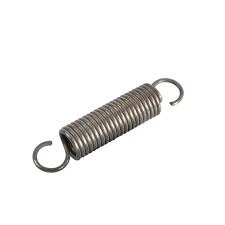
- Mobile Phone
- +8613931874955
- sales@cntcmetal.com
Cattle Fence Solutions | Durable & Reliable Fencing for Livestock
The Importance of Cattle Fences in Agriculture
Cattle fencing plays a crucial role in agricultural practices, ensuring the safety and well-being of livestock while optimizing land management. A properly constructed fence serves not just as a barrier but as a vital tool in the organization and protection of cattle herds.
Firstly, the primary function of cattle fences is to keep livestock contained within a designated area. This containment is essential for several reasons. It prevents cattle from wandering onto roads or neighboring properties, minimizing the risk of accidents or potential conflicts with other farmers. By keeping cattle in a secure environment, farmers can effectively manage their herds, monitor health, and implement breeding programs without the added stress of constant supervision.
In addition to containment, fences are crucial for pasture management. Rotational grazing is a common practice in sustainable agriculture, where cattle are moved between pastures to allow vegetation to recover and improve soil health. Fences facilitate this process by creating manageable sections within larger tracts of land. Farmers can easily rotate their herds, ensuring that each pasture has time to rejuvenate while maintaining ample feed availability for the cattle.
cattle fence

Moreover, cattle fences serve as a protective barrier against predators. Livestock is often vulnerable to attacks from wild animals, and a sturdy fence can deter these threats, safeguarding not only the animals but also the investment farmers make in their livestock. In regions where predation is common, enhanced fencing solutions, such as electrified fences, are employed to provide an additional layer of security.
However, not all fences are created equal. Different farm requirements call for various types of fencing, from barbed wire to high-tensile wire or even wooden fencing. The choice of material often depends on factors such as the terrain, climate, and specific needs of the cattle. Farmers must assess their environment and the behaviors of their livestock when designing a fencing strategy that optimally supports their operations.
In conclusion, cattle fences are more than just a boundary marker; they are an integral part of effective cattle management. By ensuring the safety of livestock, facilitating pasture management, and providing security against predators, they contribute significantly to the sustainability and productivity of agricultural practices. As farming evolves, the design and materials used in cattle fencing will continue to adapt, reflecting the changing needs of farmers and their livestock in an ever-competitive industry.
share:
-
Your Source for Concrete Wall Ties and Masonry AccessoriesNewsJul.10,2025
-
Unlocking the Power of Iron Wire for Every ProjectNewsJul.10,2025
-
Explore Advanced Chain Wire and Stainless Steel Mesh FencingNewsJul.10,2025
-
Discover the Benefits of Annealed Wire ProductsNewsJul.10,2025
-
Discover China Stainless Steel Wire Mesh SolutionsNewsJul.10,2025
-
Build with Confidence Using High-Performance Masonry AccessoriesNewsJul.10,2025
-
Why Sacrificial Formwork Is Redefining Underground ConstructionNewsJun.06,2025



















